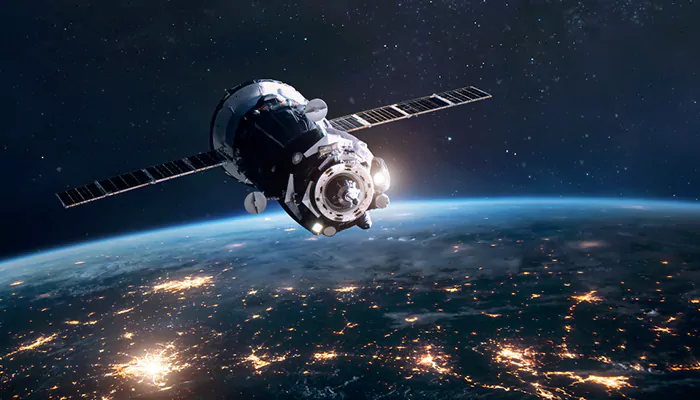Space Exploration Tech: Groundbreaking Technologies Paving the Way for Interplanetary Travel
- Admin
- 1 year ago
- 4 minutes read

Intro: From propulsion systems to life support mechanisms, these advancements are transforming the realm of space exploration, making the dream of visiting other planets a tangible reality.
The human fascination with space has driven us to explore the cosmos, pushing the boundaries of what we thought possible. As we venture further into the unknown, groundbreaking technologies have become instrumental in paving the way for interplanetary travel.
Propulsion Systems: Revolutionizing Space Travel
Propulsion systems are at the forefront of space exploration technology, propelling spacecraft beyond Earth's orbit and into the depths of space. Traditional chemical rockets have long been the primary means of propulsion, but emerging technologies are revolutionizing this field.
Ion Propulsion: Ion propulsion systems utilize ionized gases such as xenon as propellant, generating thrust through the acceleration of ions. Although initially slow to accelerate, ion engines are incredibly efficient, providing continuous thrust over long periods. This technology has been successfully employed in missions like NASA's Dawn spacecraft, which visited multiple asteroids in the asteroid belt.
Nuclear Thermal Propulsion: Nuclear thermal propulsion involves heating a propellant, typically hydrogen, using a nuclear reactor to produce thrust. This technology offers significantly higher specific impulse than chemical rockets, enabling faster travel times and larger payloads. While still in the developmental stage, nuclear thermal propulsion holds immense potential for future crewed missions to Mars and beyond.
Life Support Systems: Sustaining Human Life in the Void
One of the most critical challenges of interplanetary travel is sustaining human life in the harsh environment of space. Life support systems play a pivotal role in ensuring the health and well-being of astronauts during extended missions.

Advanced Life Support Technologies: Advanced life support systems utilize cutting-edge technologies to recycle air, water, and waste within spacecraft, minimizing the need for resupply from Earth. Closed-loop systems, employing processes like water reclamation and air revitalization, are essential for long-duration missions to distant planets where resupply missions are impractical.
Bioregenerative Systems: Bioregenerative life support systems integrate biological processes, such as plant growth and microbial activity, to maintain the equilibrium of life-sustaining elements within the spacecraft. These systems not only recycle resources but also contribute to psychological well-being by creating green spaces and fostering a connection to nature during extended missions.
Autonomous Navigation: Charting Courses Across the Cosmos
Navigating through the vastness of space requires precise calculations and sophisticated autonomous systems capable of adapting to unforeseen obstacles and changing conditions.
Autonomous Guidance and Control: Autonomous guidance and control systems enable spacecraft to navigate autonomously, adjusting trajectories and avoiding collisions with celestial objects. Artificial intelligence algorithms analyze vast amounts of data collected from sensors and provide real-time decision-making capabilities, reducing reliance on ground-based commands and increasing mission autonomy.
Celestial Navigation: Celestial navigation techniques, which have been used for centuries by sailors on Earth, are now adapted for space exploration. By observing the positions of stars and planets relative to the spacecraft, navigators can determine their precise location and orientation in space, facilitating long-range navigation without the need for continuous communication with Earth.

In-Situ Resource Utilization: Harnessing the Resources of Other Worlds
To sustain long-term human presence beyond Earth, we must learn to utilize the resources available on other planets and celestial bodies. In-situ resource utilization (ISRU) technologies enable the extraction and utilization of resources such as water, minerals, and gases from extraterrestrial environments.
Water Extraction on Mars: Water is a crucial resource for supporting human life and manufacturing rocket propellant. ISRU technologies designed to extract water ice from the Martian surface or subsurface could provide a sustainable source of water for future Martian colonies and fuel for return missions to Earth.
3D Printing with Lunar Regolith: Lunar regolith, the layer of loose soil and rock covering the Moon's surface, can be processed into construction materials using 3D printing technology. By utilizing local resources, future lunar habitats and infrastructure could be constructed autonomously, reducing the need for costly and logistically challenging shipments from Earth.
As we look to the stars, it is these innovative technologies that will enable us to reach new frontiers and expand the horizons of human exploration beyond Earth.












